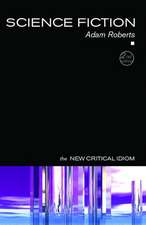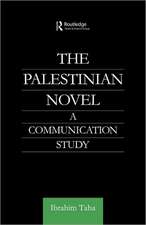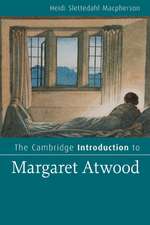What Animals Mean in the Fiction of Modernity
Autor Philip Armstrongen Limba Engleză Paperback – 21 ian 2008
In the first half of the book, Philip Armstrong examines the function of animals and animal representations in four classic narratives: Robinson Crusoe, Gulliver’s Travels, Frankenstein and Moby-Dick. He then goes on to explore how these stories have been re-worked, in ways that reflect shifting social and environmental forces, by later novelists, including H.G. Wells, Upton Sinclair, D.H. Lawrence, Ernest Hemingway, Franz Kafka, Brigid Brophy, Bernard Malamud, Timothy Findley, Will Self, Margaret Atwood, Yann Martel and J.M. Coetzee.
What Animals Mean in the Fiction of Modernity also introduces readers to new developments in the study of human-animal relations. It does so by attending both to the significance of animals to humans, and to animals’ own purposes or designs; to what animals mean to us, and to what they mean to do, and how they mean to live.
| Toate formatele și edițiile | Preț | Express |
|---|---|---|
| Paperback (1) | 364.94 lei 6-8 săpt. | |
| Taylor & Francis – 21 ian 2008 | 364.94 lei 6-8 săpt. | |
| Hardback (1) | 1007.12 lei 6-8 săpt. | |
| Taylor & Francis – 22 ian 2008 | 1007.12 lei 6-8 săpt. |
Preț: 364.94 lei
Nou
Puncte Express: 547
Preț estimativ în valută:
69.85€ • 75.90$ • 58.71£
69.85€ • 75.90$ • 58.71£
Carte tipărită la comandă
Livrare economică 22 aprilie-06 mai
Preluare comenzi: 021 569.72.76
Specificații
ISBN-13: 9780415358392
ISBN-10: 0415358396
Pagini: 264
Dimensiuni: 138 x 216 x 14 mm
Greutate: 0.34 kg
Ediția:1
Editura: Taylor & Francis
Colecția Routledge
Locul publicării:Oxford, United Kingdom
ISBN-10: 0415358396
Pagini: 264
Dimensiuni: 138 x 216 x 14 mm
Greutate: 0.34 kg
Ediția:1
Editura: Taylor & Francis
Colecția Routledge
Locul publicării:Oxford, United Kingdom
Cuprins
Introduction. 1. The Inhuman Fictions of Swift and Defoe 2. Gulliver, Frankenstein, Moreau 3. Rendering the Whale 4. Modernism and the Hunt for Redemption 5. Animal Refugees in the Ruins of Modernity
Notă biografică
Philip Armstrong teaches at the University of Canterbury, Aotearoa, where he is Co-Director of the New Zealand Centre for Human-Animal Studies.
Recenzii
"Remarkable depth and breadth in its engagement with critical discussions of animals in modern fiction".
- Susan McHugh in Society & Animals 17.4 (2009): 363-7
"An essential book for anyone involved in Animal Studies and everyone concerned with animals in literature".
- Marion Copeland in Humanimalia 1.1 (September 2009)
"A magisterial reading of Moby-Dick appears in What Animals Mean in the Fiction of Modernity alongside compelling studies of Gulliver's Travels, Robinson Crusoe, Frankenstein, a host of twentieth-century novels, and critical analyses of Wells and Lawrence ...".
- Robert McKay in The Minnesota Review issue 73-4 (2010)
- Susan McHugh in Society & Animals 17.4 (2009): 363-7
"An essential book for anyone involved in Animal Studies and everyone concerned with animals in literature".
- Marion Copeland in Humanimalia 1.1 (September 2009)
"A magisterial reading of Moby-Dick appears in What Animals Mean in the Fiction of Modernity alongside compelling studies of Gulliver's Travels, Robinson Crusoe, Frankenstein, a host of twentieth-century novels, and critical analyses of Wells and Lawrence ...".
- Robert McKay in The Minnesota Review issue 73-4 (2010)
Descriere
Philip Armstrong examines the function of animals and animal representations in four classic narratives: Robinson Crusoe, Gulliver’s Travels, Frankenstein and Moby-Dick and explores how these stories have been re-worked, in ways that reflect shifting social and environmental forces, by later novelists.















